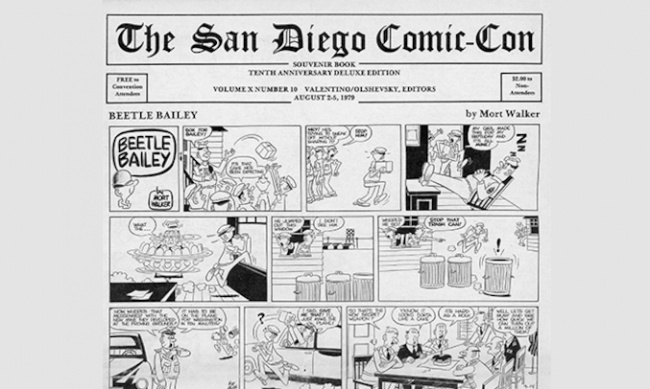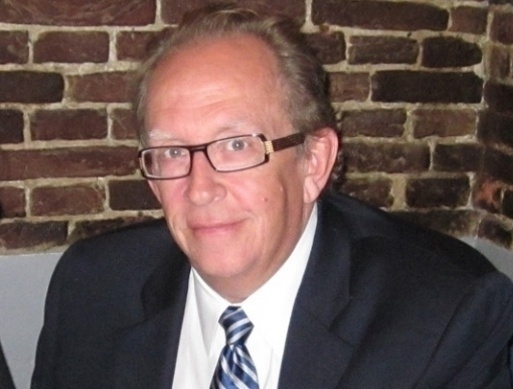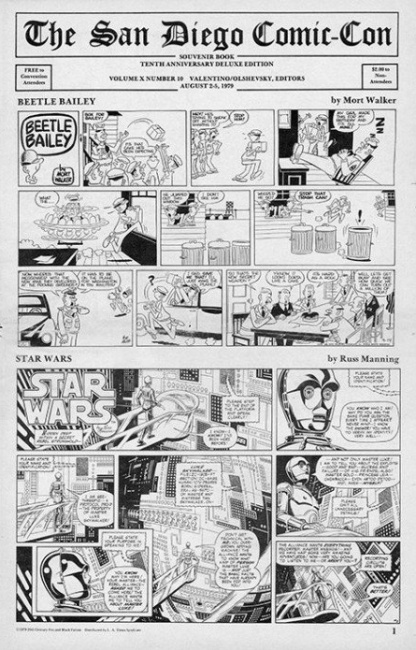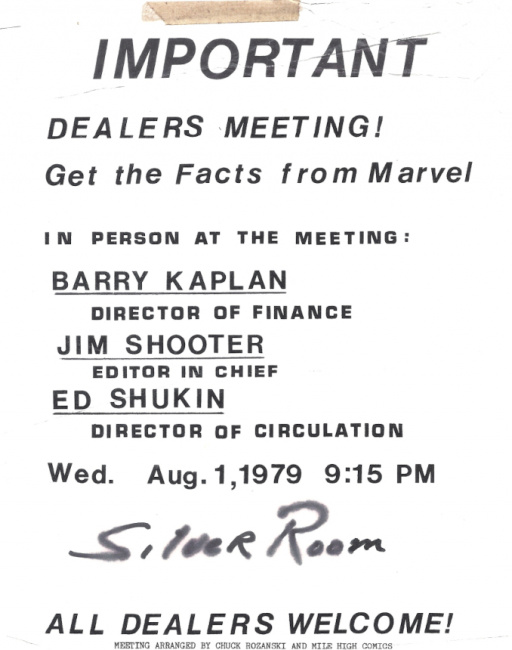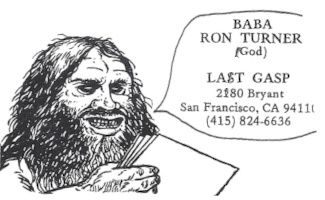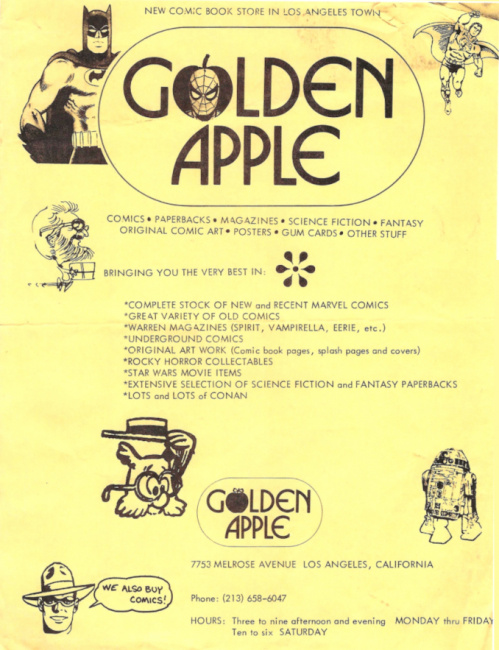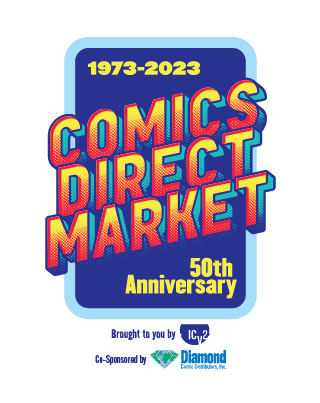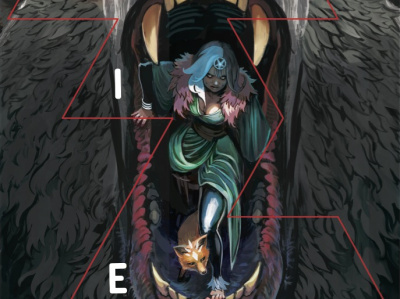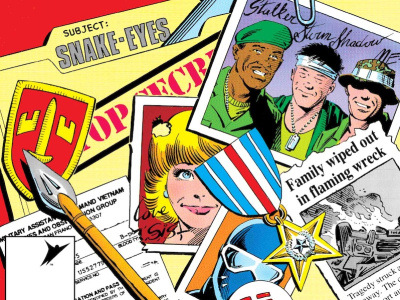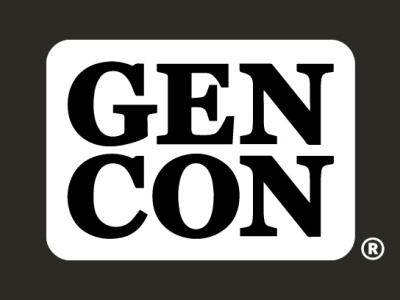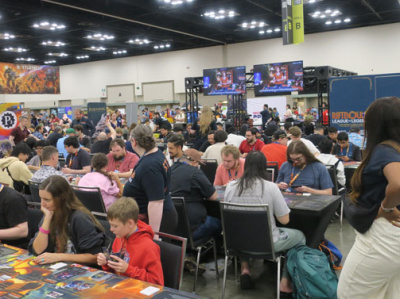I went to San Diego Comic-Con for Big Rapids with John Davis, who was a long-time collector I’d hired at our previous employer, Wisconsin Independent News Distributor, and also at Big Rapids.
One of the things Jim Kennedy, the guy that ran Big Rapids, insisted on (despite much that was chaotic about the company) was written meeting notes. I recently came across the typewritten notes from our meetings at the con that year, mostly by me but with a few written by John. They provide a fascinating snapshot of the Direct Market at a time of rapid change.
The reason it was such an important convention was that Marvel executives had come to California to publicize their new trade terms for the Direct Market and open new direct distributors to serve the comic store channel. Marvel Comics had a number of direct accounts at the time, more than DC Comics did, but the deals were all over the map and terms weren’t consistent. New Media/Irjax had filed suit over the issue, and as a result Marvel had hired Stan Neville, a California-based publishing consultant, to develop trade terms that would then be applied uniformly to all distributors.
Now Marvel was hosting a meeting to let interested parties know what the new terms were and how to become a direct distributor. A flyer for a "Dealers Meeting" posted at the show listed Marvel Director of Finance Barry Kaplan, Editor-in-Chief Jim Shooter, and Director of Circulation Ed Shukin as the Marvel executives at the meeting. The time was 9:15 p.m. on Wednesday, August 1, 1979, on the eve of the show, in the "Silver Room," which was likely a room at the old San Diego Convention Center at 2nd and C Streets.
I didn’t attend the dealers meeting (Big Rapids was already a Marvel direct account), but we did meet with Neville, Chuck Rozanski (who I think it’s likely posted the flyers, which carried the line, "Meeting Arranged by Chuck Rozanski and Mile High Comics"), and a variety of publishers, distributors, and retailers.
I also had a copy of the trade terms with my notes, although those specific terms may not have lasted long (I think they were cleaned up further the following year). The key points:
- Minimum order: $5000 wholesale per month (adjusted by cpi inflation, that would be $22,335/month).
- Order increments per title: 25
- Credit terms: 30 days, after submitting payment with order for the first three months
- Qualifying distributor: sells to unaffiliated retail outlets (this was changed to allow such sales, but purchases were to be at a lower discount)
- There was an additional charge if distributors wanted their comics shipped in boxes instead of the brown paper in which newsstand copies were shipped.
The new terms gave current customers until 1980 to get up to the minimum monthly order, as there were retailers accounts that didn’t meet those minimums as of August 1979.
Stan Neville, Consultant to Marvel
The meeting with Neville, the Marvel consultant, revealed a lot of the kind of data I’ve always loved.
He told us that a third of Marvel’s sales as of 1979 were in direct accounts, which included direct distributors like Sea Gate and Big Rapids, overseas sales of comics printed in the U.S., and Whitman, which bought Marvel comics for three-packs sold in supermarkets and similar outlets. Whitman was a quarter of Marvel’s direct sales, leaving around 25% of the total sales for overseas sales and direct distributors. I estimated at the time that Seagate was around 5% of Marvel sales and Big Rapids around 4%.
He predicted a day (pretty insightful for 1979) when there would be no newsstand sales of comics; everything would go through the Direct Market. That transition happened around 20 years later.
We talked about the fact that Marvel was advertising for a direct sales manager, a position that was filled the following year by Mike Friedrich, the first comic company employee devoted exclusively to the Direct Market.
Big Rapids had less than a year left at that point, and Neville brought up the considerable past due balance (Big Rapids cash flow was run out of Detroit, out of our control).
Chuck Rozanski, Mile High Comics
John and I also met with Chuck Rozanski of Mile High Comics, who moderated the Marvel dealer meeting. Chuck was on a crusade to expand the Direct Market, which included ideas that were revolutionary for the comics business at the time, such as co-op TV ads produced by Marvel. Other ideas were less grounded in good business, such as his plan to sell to other retailers at 58% off once his Marvel direct kicked in. He felt that Sea Gate had been taking advantage of retailers (his language was more colorful) and he wanted to get even. At one point in my notes, I called him "fanatical and wild-eyed." At the time he had four retail stores in Colorado, and thought he was the largest comic retailer in the country (which he may have been). Chuck’s still in the comics business and we plan to interview him for this history project, so it will be interesting to get his perspective on the period.
Phil Seuling, Sea Gate Distributors
Sea Gate was involved in the New Media/Irjax litigation; his deal with Marvel was not as good as some others in some ways.
We talked about efforts by New Media/Irjax to get exclusives on fan publications.
He encouraged us to exchange credit information, noting that two distributor accounts that Big Rapids had taken from him (Bob Beerbohm’s First Order and Steve Pierson’s Nova Distributors) were both bad credit risks.
While Chuck was advocating for the interest of retailers, Phil was all about distributors cooperating to form a united front against publishers, efforts that later led to the formation of IADD, the International Association of Direct Distributors, a trade association that did take a leadership role in the development of the Direct Market.
He also pitched us on his first publishing effort: Wally Wood’s The Wizard King, a softcover book (graphic novel?).
Other Distributors
In addition to Sea Gate, Pacific Comics, and Big Rapids customers First Order and Nova Distributors, we also met with two other distributors:
Bill Schanes of Pacific Comics, who were expanding into paperbacks, especially British science fiction, and had begun publishing "many portfolios," which Big Rapids didn’t carry.
Carl Macek of Alexander Distribution, which was distributing to around ten stores in Orange County, and expanding.
Direct Market Publishers
We met with a number of publishers whose products were intended for the Direct Market, a murderer’s row of individuals who contributed a lot to the comics business:
Gary Groth was publishing The Comics Journal (still coming out in 2023!), and met with us along with Ralph Macchio (not sure why he was there). Gary had recorded the Marvel dealers panel and planned to do an issue of The Comics Journal on distribution.
Jim Steranko, who was publishing the very cool fan magazine Mediascene.
Mike Friedrich, of Star Reach, a "ground level" comic publisher, who became Marvel’s first direct sales rep the following year (watch for our interview with Mike, which is coming soon).
James Van Hise of Rocket Blast Comicollector and Star Trek fan magazine Enterprise Incidents.
Richard Pini of Elfquest, like Star Reach, a comic that threaded the line between above ground and underground comics: a perfect fit for comic stores. Currently published by Dark Horse Comics.
Tony Raiola, who published comic strip reprint books as Pacific Comics Club.
Comic Retailers
Of course, the 1979 San Diego Comic-Con was all about comic dealers. Who else was going to exhibit – publishers, movie studios? Not so much.
Bob Sidebottom of We Got Comics in Monterey, who had my favorite business card at the show, with what sure looks like a Robert Crumb illo. He’d been involved with distribution, but was pulling back to his retail store and mail order.
Marty Hay, who’d just acquired Comic City in Minneapolis.
Wayne Barger and Richard Gummer of Alpha-Omega Comics in Fresno.
San Diego retailers Comic Kingdom and Magic Dragon.
And we reproduce here a flyer I picked up at the show for a new store that had just opened in Los Angeles: Golden Apple, which became one of the most well-known comic stores in the country over the following decade, and is still in business, run by Ryan Liebowitz, the son of founder Bill Liebowitz, who, sadly, passed away in 2004 (see "In Memoriam: Bill Liebowitz"). Watch for our profile of Golden Apple, coming up soon.
San Diego Comic-Con: 43 Shows and Counting
This trove of notes, flyers, and cards has been a gas for me to peruse, taking me back to my days as a young striver coming up in the business. Many of the meetings John and I held at that show were with people who ended up being key suppliers, customers, and friends after we started Capital City Distribution the following spring. Big Rapids was ending its run, dragged down by bad debt and a chaotic business style at the top, along with a strategy that included the quixotic goal of competing with ID wholesalers on magazines. So while that was our first San Diego Comic-Con it was not our last.
We were regular exhibitors as Capital City Distribution (one highlight was the year legendary manga-ka Rumiko Takahashi did a signing at our booth), and I’ve continued to go every year since we sold Capital in 1996, first for my consulting business, then for NextPlanetOver, and for the last 22 years, for ICv2. This will be my 43rd consecutive Comic-Con. See you at the show.
This column was part of ICv2’s Comics Direct Market 50th Anniversary celebration; for more, see "Comics Direct Market 50th Anniversary."



